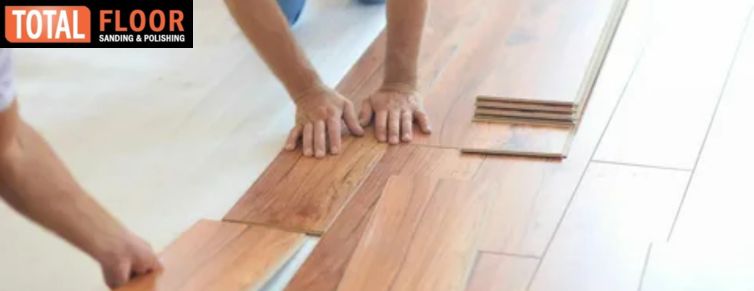Transforming your floors can dramatically improve the look of your home. But before you dive into sanding, it’s crucial to prepare properly. Proper prep ensures a smooth, professional finish and saves you from headaches.
In this comprehensive guide, we’ll cover all the essential steps to get your floors ready for sanding. By following these steps, you can ensure that your floorboard sanding Melbourne project goes off without a hitch.
Understanding the Importance of Preparation
Preparation is the key to a successful floor sanding project. It sets the foundation for everything that follows. Proper prep ensures that the sanding process goes smoothly, the finish looks professional, and the floors last longer.
Without it, you might face issues like uneven surfaces, excessive dust, or even floor damage.
When you prepare thoroughly, you identify and fix problems that could become bigger later. For example, loose boards or protruding nails can damage your sanding equipment or create an uneven surface.
By addressing these problems beforehand, you ensure a smoother, more efficient floorboard sanding Melbourne process.
Assessing Your Floor Condition
Start by assessing the condition of your floors. This step is crucial because it helps determine what kind of work lies ahead. Look for any damage, such as loose boards, cracks, or nails sticking out.
Identifying the type of wood you’re working with is essential, as different woods have different needs. If you find any damaged boards, decide whether to repair or replace them. Fill gaps and fix squeaks at this stage to ensure a smooth sanding process later.
Step-by-Step Assessment:
- Inspect for Damage: Walk around the room and look for loose floorboards, cracks, or other signs of damage. Use a flashlight to inspect darker areas and corners.
- Check for Protruding Nails: Run your hand lightly over the floor to feel for any nails sticking out. These can tear your sandpaper and damage your equipment.
- Identify the Wood Type: Knowing your floor’s wood type helps you choose the right sandpaper and finishing products. Common types include oak, pine, and maple, each with its characteristics.
- Decide on Repairs: If you find loose boards, you may need to re-secure them with nails or screws. For large gaps or cracks, consider using a wood filler.
Gathering the Necessary Tools and Materials
Next, gather all the tools and materials you’ll need. Essential tools include a drum sander, an edger, a buffer, and various grits of sandpaper. Don’t forget safety gear like masks, goggles, and ear protection to protect yourself from dust and noise.
Additionally, you’ll need materials like wood filler for gaps and cracks, and cleaning supplies to keep your work area tidy.
Essential Tools:
- Drum Sander: This is your primary tool for sanding large, open areas. It removes the old finish and levels the floor.
- Edger: An edger allows you to sand along the edges and in corners where the drum sander can’t reach.
- Buffer: After sanding, a buffer helps smooth out any remaining rough spots and prepares the floor for finishing.
- Sandpaper: You’ll need a variety of grits, from coarse (around 36-grit) for initial sanding to fine (around 120-grit) for finishing touches.
Safety Gear:
- Dust Mask or Respirator: Sanding creates a lot of dust, which can harm your lungs. Always wear a dust mask or respirator.
- Safety Goggles: Protect your eyes from dust and debris.
- Ear Protection: Sanders is noisy, so ear protection is necessary to prevent hearing damage.
- Gloves: These can protect your hands from splinters and the vibrations of the sander.
Additional Materials:
- Wood Filler: Use this to fill any gaps or cracks in the floor before sanding.
- Plastic Sheeting and Painter’s Tape: Use these to protect walls and fixtures from dust.
- Vacuum and Cleaning Supplies: Keep the work area clean to ensure the best results.
Preparing the Room
Now, it’s time to prepare the room. Start by clearing the space of all furniture, rugs, and other items. Protect fixtures and walls with plastic sheeting and painter’s tape.
This step is crucial to prevent dust and debris from spreading throughout your home. Ensure the room has adequate ventilation to manage dust and fumes effectively.
Steps to Prepare the Room:
- Remove Furniture and Rugs: Take all furniture, rugs, and other items out of the room. You need a completely clear space to work efficiently.
- Protect Fixtures and Walls: Cover light fixtures, door frames, and walls with plastic sheeting and secure it with painter’s tape. This helps contain dust and prevents damage.
- Ensure Ventilation: Open windows and doors to ensure good airflow. If possible, use fans to help ventilate the room and direct dust outside.
Cleaning the Floor
Before you start floorboard sanding Melbourne, give your floor a thorough cleaning. Begin with an initial sweep and vacuum to remove loose debris.
Then, use a wood-friendly cleaner to deep clean the surface, removing any dirt or stains that could interfere with the sanding process.
Steps for Cleaning:
- Initial Sweep and Vacuum: Use a broom to sweep up large debris and a vacuum to pick up finer dust. Pay special attention to corners and edges.
- Deep Cleaning: Use a wood-friendly cleaner and a mop to clean the floor thoroughly. This removes any dirt, grime, or stains that could affect the sanding process.
- Dry the Floor: Allow the floor to dry completely before moving on to the next step. Any moisture can cause problems during sanding.
Securing Loose Boards and Nails
Check for any loose boards and nails. Tighten loose boards by securing them with screws or nails. Ensure all nails are countersunk below the surface of the wood to avoid damaging the sander. This step ensures a smooth and safe sanding experience.
Steps for Securing Boards and Nails:
- Tighten Loose Boards: Use a hammer or screwdriver to re-secure any loose boards. Make sure they are firmly in place.
- Countersink Nails: If you find any nails sticking out, use a nail set to countersink them below the surface of the wood. This prevents them from tearing your sandpaper or damaging your sander.
Filling Gaps and Cracks
Next, fill any gaps and cracks in the floor. Choose a wood filler that matches your floor’s colour and apply it with a putty knife. Smooth the filler out and let it dry completely.
This step ensures that your floor will have an even, seamless appearance after sanding.
Steps for Filling Gaps and Cracks:
- Choose the Right Filler: Select a wood filler that matches the colour of your floor.
- Apply the Filler: Use a putty knife to apply the filler to gaps and cracks. Press it in firmly and smooth it out.
- Let it Dry: Follow the manufacturer’s instructions and allow the filler to dry completely, which usually takes a few hours.
- Sand the Filler: Once the filler is dry, lightly sand it with fine-grit sandpaper to ensure it’s level with the rest of the floor.
Sanding Preparation
Before you start sanding, select the right sandpaper. Begin with a coarse grit for the initial pass, removing the old finish and levelling the surface.
Then, gradually move to finer grits for a smoother finish. It’s a good idea to test a small area first to ensure you’re using the right sandpaper.
Steps for Sanding Preparation:
- Select Sandpaper Grit: For the first pass, start with coarse grit. Then, move to medium and then fine for subsequent passes.
- Test a Small Area: Before you start on the entire floor, test the sandpaper on a small, inconspicuous area to ensure it’s effective without causing damage.
Pre-Sanding Safety Checks
Safety is crucial. Ensure all your tools are in good working order. Check for electrical issues, and keep flammable materials away from your work area.
Proper dust disposal is also essential to prevent fire hazards. Taking these precautions will keep you safe throughout the project.
Steps for Safety Checks:
- Inspect Tools: Check that all your sanding tools are working well. Look for frayed cords or other damage.
- Check Electrical Safety: Ensure your power outlets and cords are safe. Avoid overloading circuits.
- Fire Safety: Keep your work area free from flammable materials. Sanding produces fine dust that can be highly flammable.
- Proper Dust Disposal: Regularly empty your vacuum or dust bag. Store dust outside, away from heat sources.
Final Room Check
Before you start sanding, do a final check of the room. Make sure all prep work is complete, and everything is in place.
Plan your sanding path strategically to cover the entire floor efficiently. Starting in a corner and working your way out is usually a good approach.
Steps for Final Check:
- Verify All Prep Work: Double-check that all loose boards are secured, gaps are filled, and nails are countersunk.
- Plan Your Path: Strategize your sanding path to avoid walking over freshly sanded areas. Start in a corner and work your way towards the exit.
Ready, Set, Sand!
Now, you’re ready to start sanding. Begin with the drum sander and make your initial pass with coarse grit sandpaper. Move the sander slowly and steadily to avoid gouging the floor.
After the initial pass, switch to a finer grit for subsequent passes. Don’t forget to sand the edges and corners using an edger, as the drum sander can’t reach these areas.
Steps for Sanding:
- Initial Pass with Drum Sander: For the first pass, start with 36-grit sandpaper. Move the sander in straight lines, slightly overlapping each pass.
- Subsequent Passes: Switch to medium and then fine sandpaper for additional passes. This will smooth the floor and prepare it for finishing.
- Sand the Edges and Corners: Use an edger to sand along the walls and corners. Be careful not to damage the baseboards.
- Final Buffing: Use a buffer with a fine screen or pad to give the floor a smooth finish.
Post-Sanding Cleanup
After sanding, it’s time for a thorough cleanup. Remove dust using a vacuum and a damp cloth. Inspect the sanded floor for missed spots or uneven areas and address them as needed.
This step ensures a flawless finish before you move on to staining or sealing.
Steps for Cleanup:
- Vacuum Thoroughly: Use a brush attachment to remove all dust from the floor, walls, and any other surfaces in the room.
- Wipe Down Surfaces: Use a damp cloth to wipe down the floor and other surfaces. This will help pick up any remaining dust particles.
- Inspect the Floor: Look for any missed spots or uneven areas. Sand these areas again if necessary.
- Final Dust Removal: Do a final pass with the vacuum to ensure the floor is completely dust-free.
Conclusion
Proper preparation is crucial for a successful floor floorboard sanding Melbourne project. By following these essential prep steps, you’ll ensure a smooth, professional finish that transforms your floors.
Remember to assess your floor’s condition, gather the necessary tools, prepare the room, clean the floor, secure loose boards and nails, fill gaps and cracks, and perform safety checks.
Trust the experts at Total Floor Sanding and Polishing to provide the highest quality materials and guidance throughout your project.
With everything in place, you’re ready to sand and enjoy the results, knowing that we’re here to help you achieve a professional finish.


